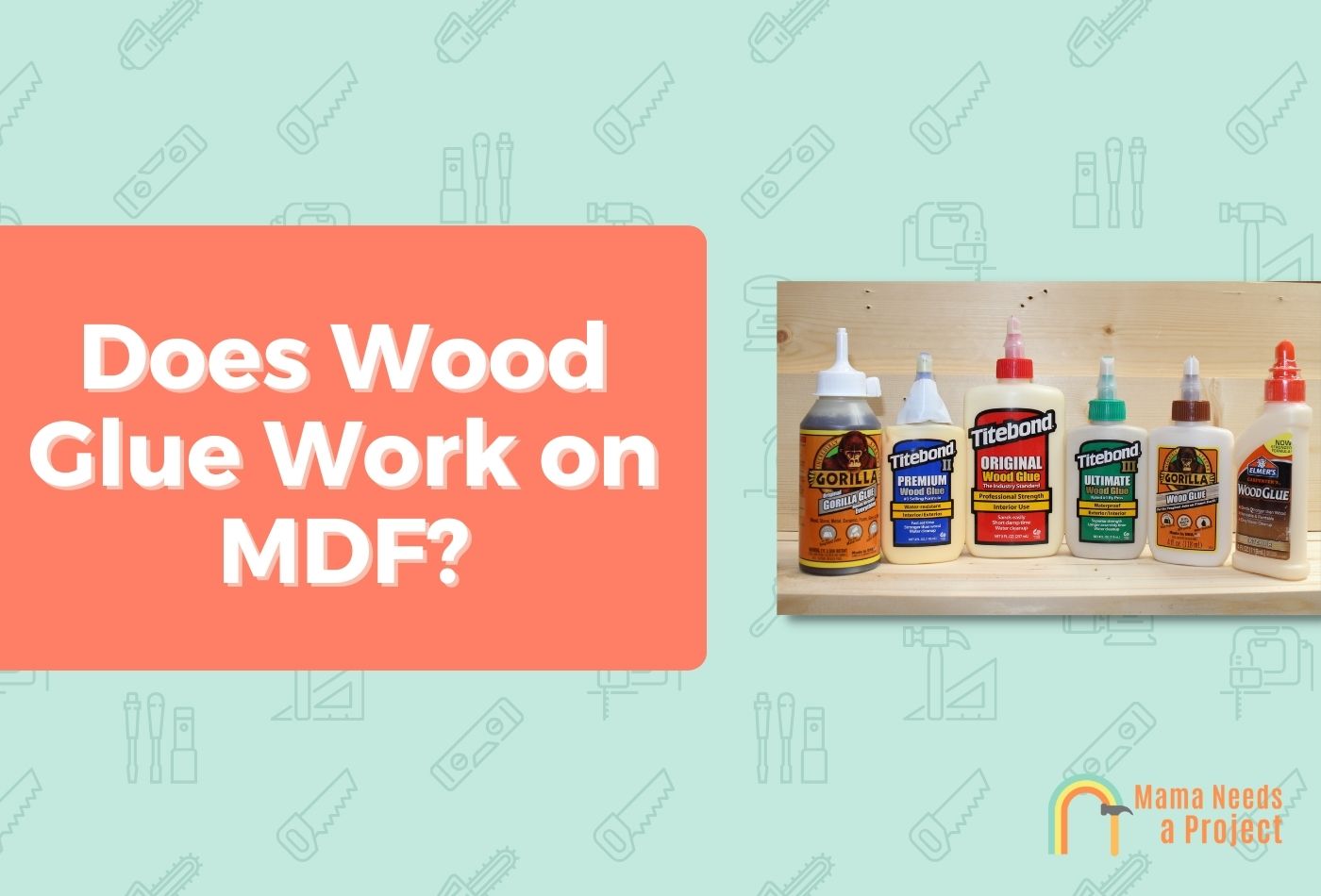Does Wood Glue Work on MDF? (2024 Guide)
MDF, or medium density fiberboard, can be an extremely convenient and cheap type of wood that can be used on a variety of projects. It’s lightweight, easy to find, and very versatile. What’s not to love?
But you might be wondering “does wood glue work on MDF?” Let’s find out!
Yes, wood glue does work on MDF. However, you’ll want to use the right type of wood glue to get the strongest and most durable bond. PVA, epoxy, and plastic resin wood glues all work great on MDF. Just clean the surface, apply the glue, clamp it, and let it dry to bond your MDF boards together!
Can I Use Wood Glue on MDF?
That answer is a simple, yes wood glue will work on MDF!
While some wood glues are better suited for MDF than others, most wood glues will work on MDF.
It’s worth noting that because MDF is more porous than other types of woods, the MDF board may absorb the glue and require more glue than you think of necessary. If you want a strong bond, always use the appropriate amount of wood glue.
Best Glue for MDF
1. Titebond Ultimate Wood Glue
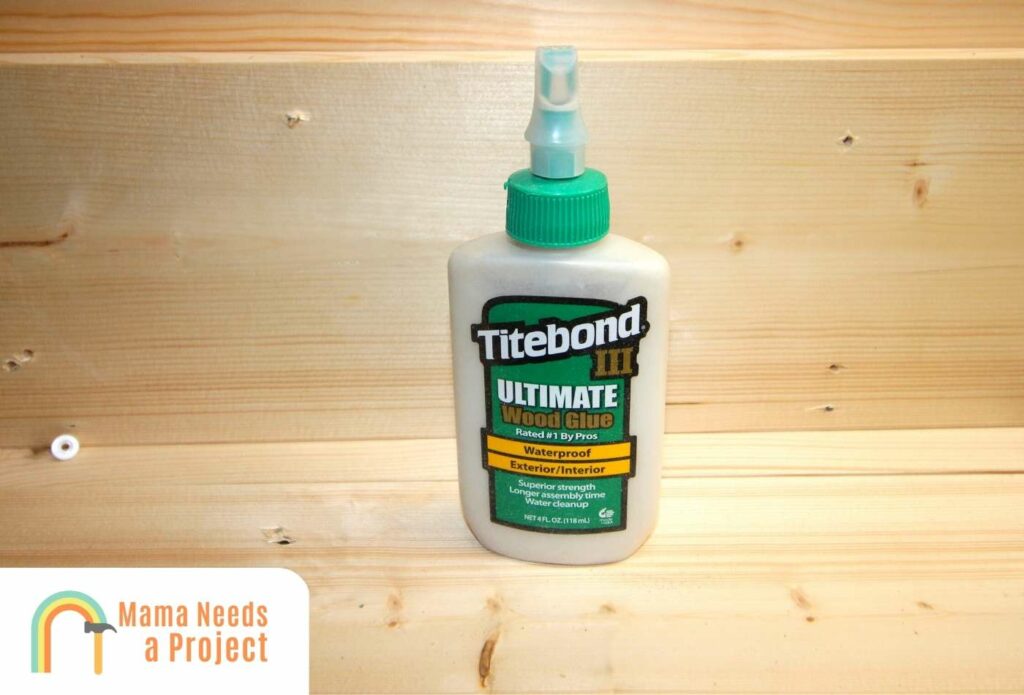
Titebond Ultimate is the best glue for MDF for several reasons. This adhesive is non-toxic, relatively strong, and very affordable. It’s one of the best MDF glues you can choose and works great joining MDF together.
As a bonus, you can use this wood glue on all of your other woodworking projects, so you aren’t forced to purchase multiple glues.
It’s a strong glue that can withstand some humidity (although not excessive) so you can use it in bathrooms and other areas around your home, which comes in handy.
- Superior waterproof wood glue is ideal for exterior and interior woodworking! One hour clamp time! Cleans up…
2. Gorilla Wood Glue
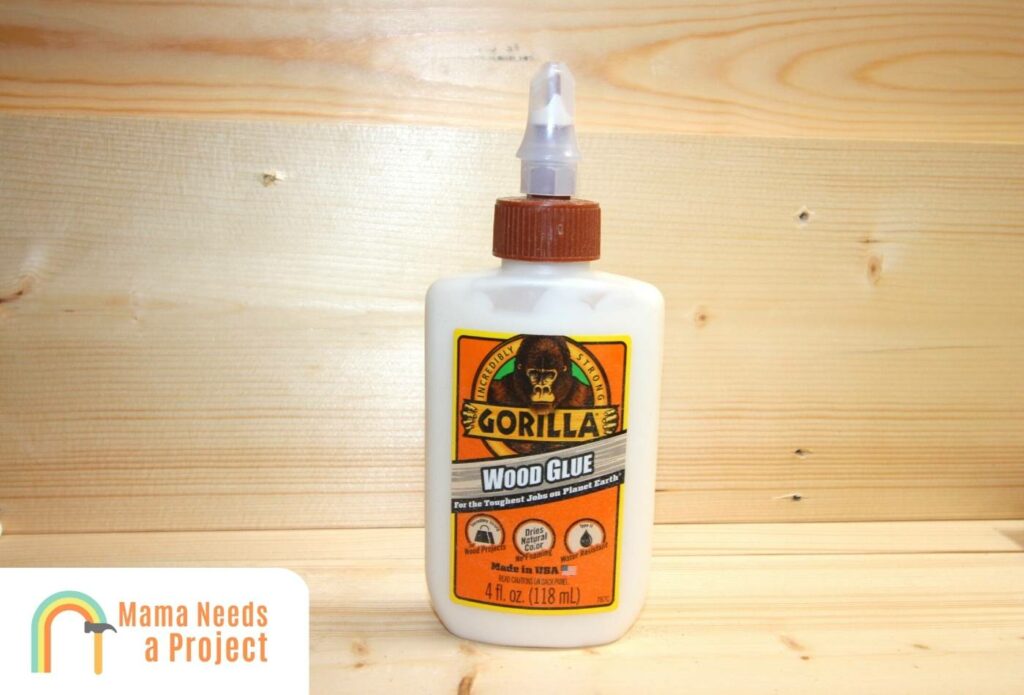
Gorilla wood glue is another great choice to glue MDF. Keep in mind that this is different than the original Gorilla glue, which is polyurethane based and won’t work nearly as well.
This is a PVA wood glue that can secure MDF joints and surfaces without trouble. It’s strong, inexpensive, and versatile.
This MDF glue is great for woodworking projects and is one of the best glues you can find. I’m a huge fan.
- Incredibly strong wood glue: Gorilla Wood Glue Ultimate formula is 100% waterproof and incredibly strong, but…
- Indoor and outdoor use: Great for outdoor applications where temperatures or moisture might be a concern, as…
- Waterproof and durable: Our versatile and waterproof wood sealer, passes the ANSI/HPVA Type 1…
3. Elmers Wood Glue
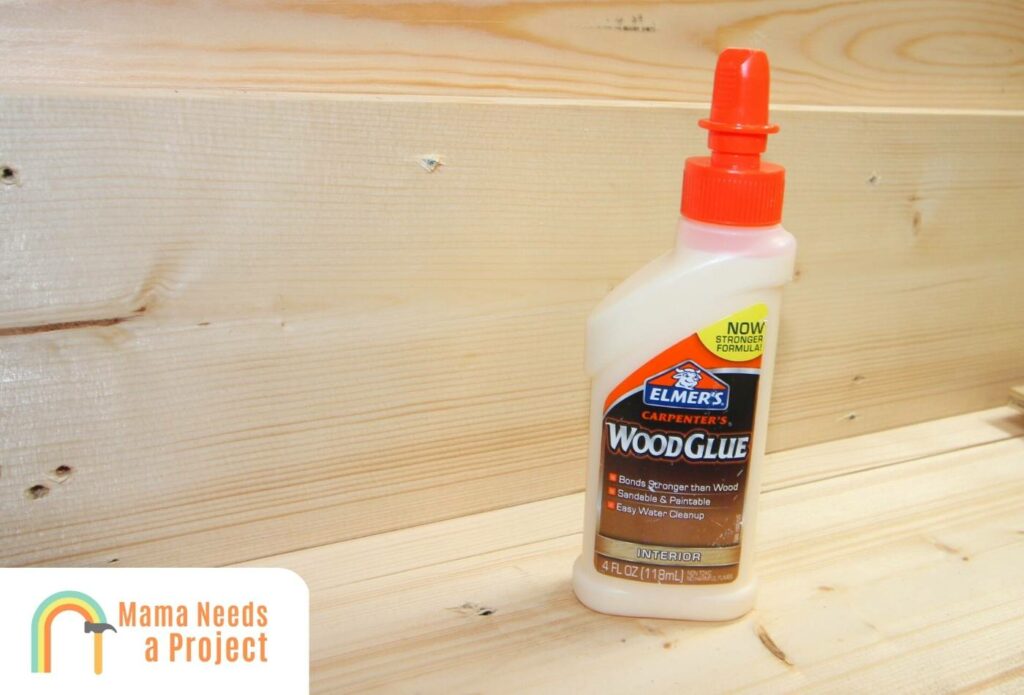
Elmer’s wood glue is great for MDF projects and many woodworkers claim it’s their favorite. This is one of the best PVA wood glues you can use on any MDF surface or joint. It’s non-toxic and can be used on any wood surface around your home.
Additionally, almost all PVA glues can be sanded and stained, so you can match your desired appearance with this glue for MDF.
- Extra-strength wood adhesive
- Non-toxic, no harmful fumes and easy to clean up with water
- Sandable and Paintable
Best Types of Wood Glue to Use on MDF
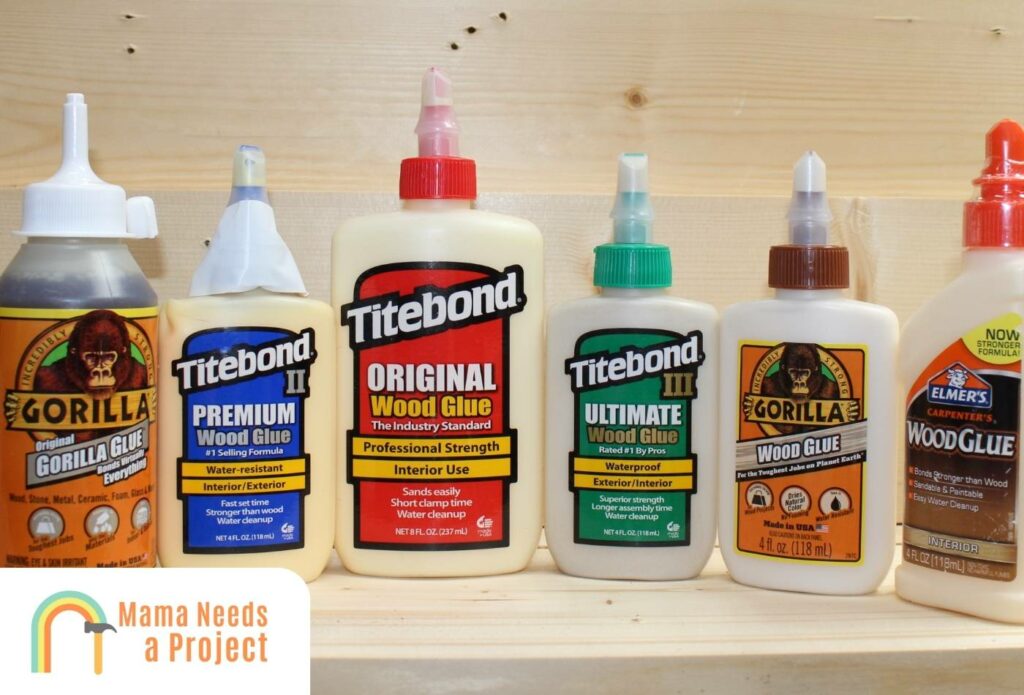
PVA Wood Glue
PVA wood glue is the most common type of wood glue on the market. It comes in the brand names Elmer’s, Titebond, Gorilla Wood Glue, and others and you can easily find this at your local hardware store.
If you’re an avid woodworker like I am, there’s a strong chance you already have a PVA wood glue in your shop.
PVA glue offers a decent bond, fast drying time, and it’s the most affordable glue you’ll find. You can easily wipe it away without the need for paint thinner or another harsh chemical, which is another benefit.
That said, it doesn’t feature any water resistance and it’s not quite as strong as other glues like epoxy, plastic resin glue, or polyurethane glues.
Because MDF is made of wood fibers that are pressed together into boards, it makes sense that PVA glue would work with MDF.
Epoxy Wood Glue
If you need something more durable and longer lasting than PVA glue, an epoxy wood glue can be a great choice.
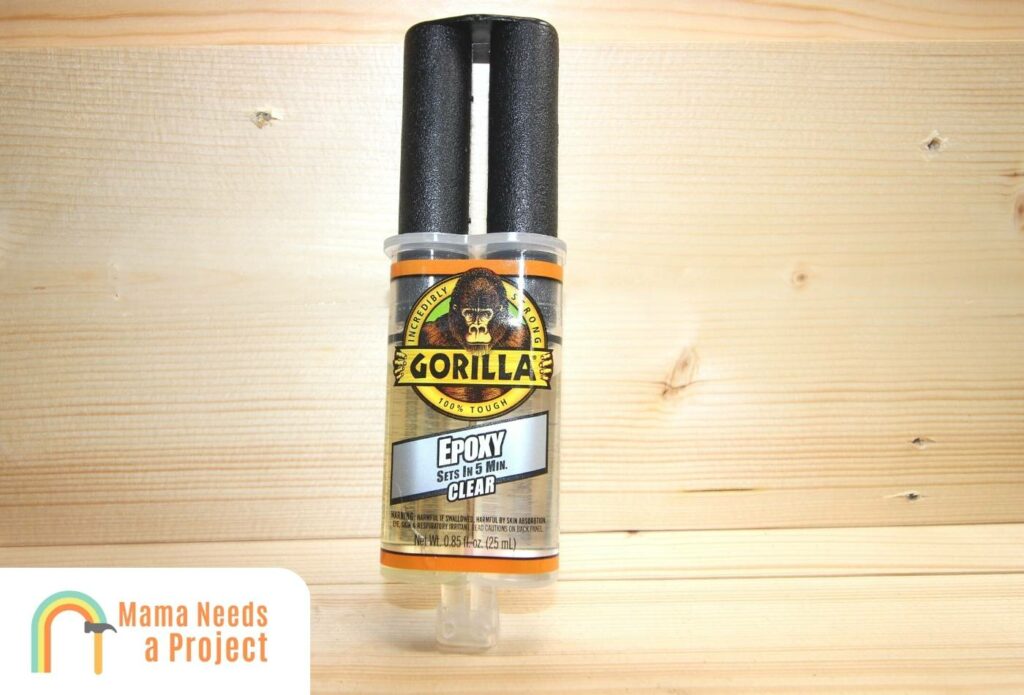
This type of wood glue offers superior strength but is more expensive and takes longer to dry. Another advantage of epoxy glues is its water resistance so it works great for both indoor and outdoor projects.
Epoxy wood glues come in two tubes that mix together and force a chemical reaction that allows the glue to harden.
Epoxy is a great MDF adhesive that is perfect for creating a strong bond between your MDF boards.
Plastic Resin Glue
Plastic resin glue is a strong glue that can make joining MDF together easy.
That said, it’s highly toxic and you’ll need to wear protective gear when applying this type of glue. Just like with an epoxy wood glue, it’s somewhat more expensive and it takes longer to dry.
This is one of the slower drying glues you’ll find, but it could be worth it for the additional strength.
Another benefit is the water resistance. If you’re working on outdoor projects that require waterproof wood glue – plastic resin glues are great options.
Plastic resin based glues are stronger than other wood glues making them one of the best MDF adhesives you can use.
How to Glue MDF Together
1. Clean Surface
Before applying glue to MDF wood, you need to clean the surface. If your surface is dusty, grimy, or otherwise dirty – the glue may have a hard time adhering to the surface, resulting in a weaker bond that doesn’t hold up.
2. Test the Glue
I always recommend testing the glue on your surface before covering the entire project. This will help you to ensure you get the desired result. For example, not all wood glues dry clear, so you might want to test and check the drying color before moving on.
3. Apply Glue
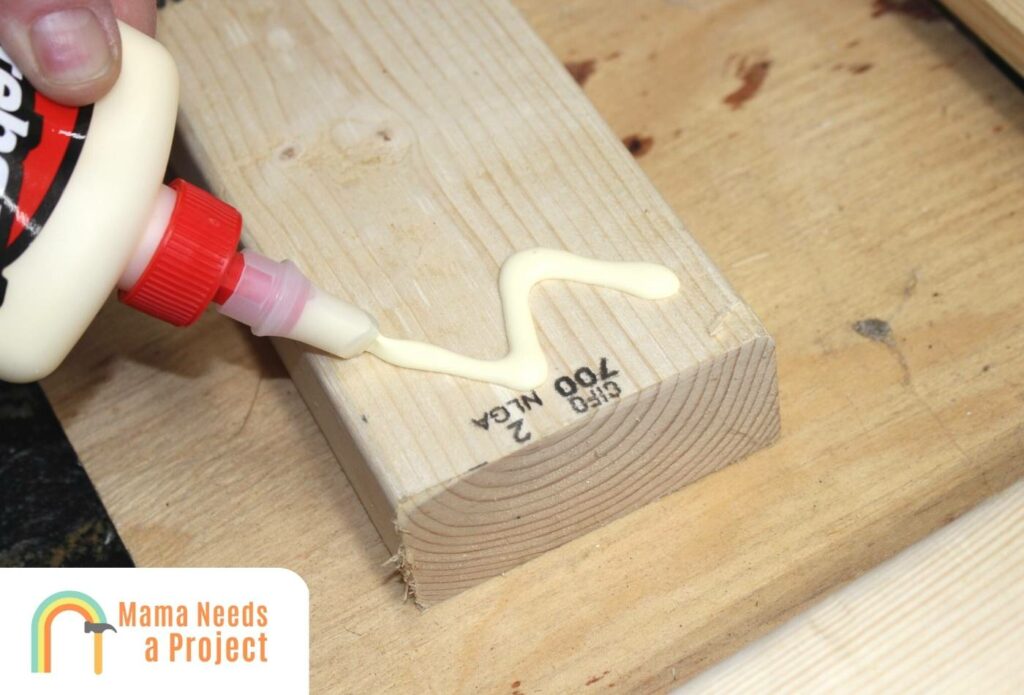
Once you’ve got a clean surface, it’s time to apply your wood glue. It’s important to to place too much glue on the surface. You want to aim for a thin layer across the entire surface area that you’re joining.
Just as important is applying enough glue to ensure the entire surface is coated. If you don’t use enough glue, you may not get a proper bond and your glue will breakdown quicker than it should.
You also want to be sure that you coat the surface evenly. You don’t want some areas with excess glue and others without enough. If this is the case, try to spread the glue out with your finger across the surface.
Because MDF surfaces are not as strong as other woods, I would highly recommend using screws in addition to MDF glue for a more durable and long lasting finish.
4. Clamp the Surface
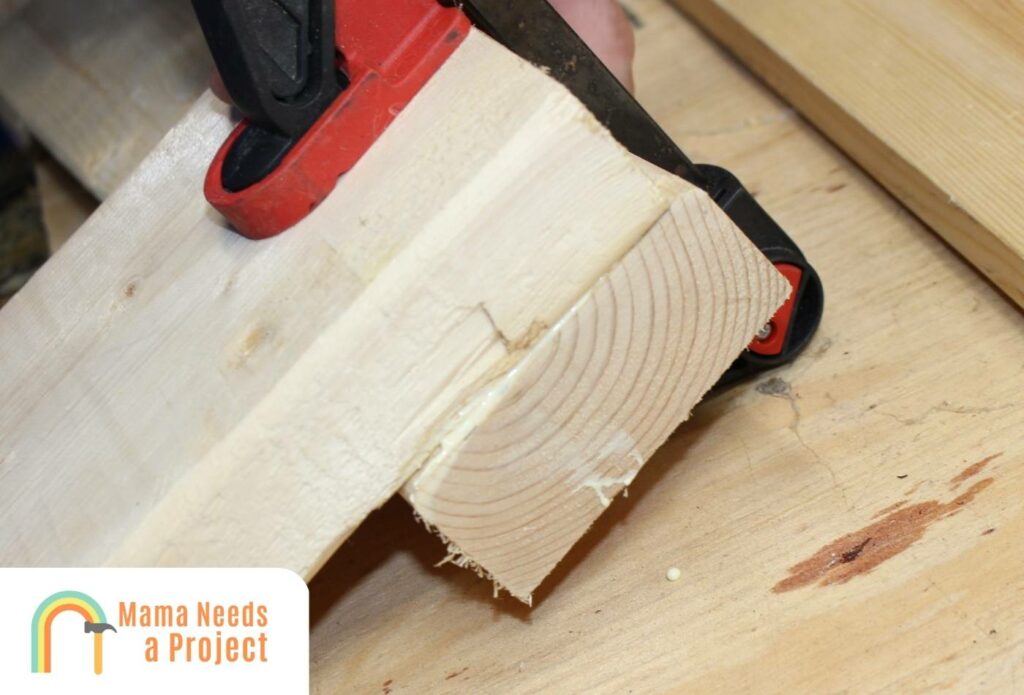
To get the strongest bond possible, clamping the surfaces together is necessary. This will ensure a proper bond forms and the glue can hold in place.
You can clamp the surfaces together for around 30 minutes to one hour, depending on the wood glue used. For PVA glues, around 3o minutes will do the trick. For plastic resin glue, it might require more than 30 minutes.
If you find that there is no excess, you might want to use more wood glue to ensure the entire surface is coated.
5. Wipe Excess Glue
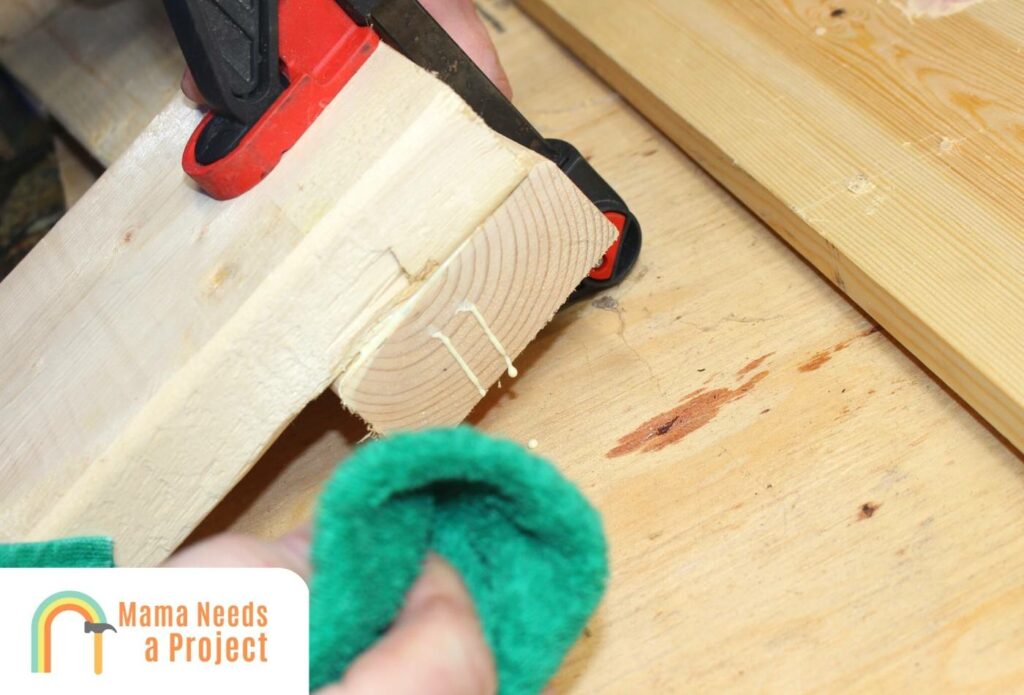
If you have any excess glue on the MDF, you should wipe it away with a damp paper towel or rag. This will help to avoid dried glue lines that might be exposed when you remove the clamps from your wood.
6. Let it Dry
Once you remove the extra glue, allow the glue to dry and cure completely before messing with it.
The time it takes wood glue to dry will depend on the type of glue used. For some glues, it can be as short as 30 minutes, while others may require a full 24 hours to cure.
Always, always, always allow your wood glue to dry completely before moving the project, otherwise your bond could break causing you to have to redo your work.
Want to use hot glue instead? Learn if hot glue works on wood!
Can you use wood glue on MDF trim?
Yes, wood glue can be a great adhesive for MDF trim. Just clean the trim, apply the wood glue, and join your pieces for a sturdy bond.
Final Thoughts
Gluing MDF surfaces can be easier than you think. There are plenty of wood glues that work on MDF so you can join your MDF with ease.
The best glue for MDF is Titebond III Ultimate wood glue. It’s a versatile glue that’s both strong and affordable and works on any wood surface.

